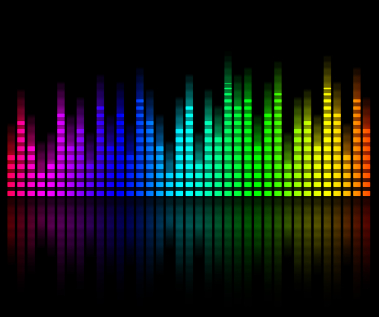From her perspective as owner of Voice-Over Vermont and the principal voice talent for the company, Mary Catherine Jones has a keen ear for the deadly sins that bedevil the voiceovers in many business presentations. Whether you’re producing a voiceover for a DVD video tour of your manufacturing facility, narrating a guided tour of your software product, or trying to add some expressiveness to a business presentation, attention to a few key techniques can elevate your voice work from pedestrian to professional caliber.
Though she admits she may be talking herself out of prospective jobs, Mary Catherine believes that the best person to do the voiceover is often a person within the company—the owner or someone very knowledgeable and passionate about the product or service being offered.
“If you have someone in your company that can convey that interest and communicate passion in what they are saying,” she said, “then they are a great person to be doing the audio. But, they have to be able to convey that interest and passion. Sometimes folks are inhibited. We have all heard those commercials on television, maybe for furniture, where Joe says in a flat voice, ‘Hi, I’m Joe and we’ve got a really wide selection of sofas . . .’ And we’re thinking, ‘Oh, come on Joe, relax a little.’ If you could just sit down with Joe for 15 minutes, give him a little coaching, and get him to loosen up, then everybody is going to want to go to Joe’s. They pick up on the interest and excitement.”
“And,” Mary Catherine continued, “if you have somebody in your company who can communicate this kind of excitement, that is going to be better than even the best voice talent, because it is going to be authentic. There is, however, a certain minimum threshold that they have to be able to achieve technically before they are able to do that.”
With a diverse body of work that includes everything from smooth commercial fare to frantic animated characters in children’s tales, Mary Catherine shared her ideas for getting the best results when recording business narration and voiceovers.
Do you think that narration in business presentations is one of those things where ‘you only get one chance to make a first impression’?
Yes, exactly. If a company is putting audio and voiceovers out there—particularly if they are doing it on the Web or DVD where it is directed to the consumer or potential consumers—they have to be really careful. It is one thing to save money by doing voiceovers in house, but if you are putting something out there which conveys the image of your company and it is really dull or people are tripping over words, then you have lost the ability to make a good impression and you have probably created a negative one.
What are the worst problems that you hear in business voiceovers?
The way that people read is often not the way that they speak conversationally, so you sometimes hear a very monotone expression in people’s reading. While some scripts don’t give themselves so readily to conversational style, it is still important to keep interest in your voice and not just have it sound like you are reading something, because otherwise your audiences tunes out in about 3 to 5 seconds.
Poor sound quality is another common problem. Sometimes people will literally record something on their iPhone in a room that isn’t really meant for recording, and so it has this live, echoey sound in the background. This just sounds second rate and it can have a negative effect on the company’s image.
Similarly, folks that aren’t that familiar with recording can sometimes have trouble with just the distance from the microphone, whether it is the phone itself or an actual microphone. Their enunciation will either be overly enunciated, which will sound distorted on the sound track, or it can be under enunciated, so that it sounds like mumbling—making it very difficult to hear. Any time you are putting up an obstacle between the message you are trying to impart and the people you are trying to impart it to, then that is a problem.
People are sometimes wonderfully expressive when talking naturally in conversation, but then you give them a script and they lapse into a monotone reading voice.
I don’t know where that comes from, but I think it may start when kids are pretty young. I think that it has to do with the fear of messing up on the words and so they are putting all of their concentration into the reading part as opposed to the expression part. It often takes just a little bit of direction to say, “Are you aware of this is what this sounds like? Let’s bring a little life into it.”
Does it go to the other extreme where sometimes people are too expressive?
Oh, absolutely. That can definitely happen. But it’s only maybe one out of ten at that extreme. Every once in awhile somebody’s inner car salesman seems to come out inappropriately. It doesn’t take too much to work that down most of the time.
How do you mark up a script for a reading?
I mark up a script almost as if it was a piece of music that I was working on with a conductor. Only in this case, most of the time the conductor is myself (although sometimes I will be given direction by the clients that I am working for). I will literally make up the equivalent of a legato mark, so that I have one phrase where I know that is one entire phrase that I need to articulate in a particular way (as opposed to breaking it up in a more staccato fashion, which might be more bullet points or something like that).
There might be a trademarked phrase that is associated with a company that I want to set off vocally as that phrase, as opposed to just a series of words. Similarly, if I want something with more emphasis, I will either underline it or I will put forzando sign on top of it that comes from my music background. I translate that pretty fluidly onto a script.
Also, I will make breaks. I will sometimes write out a word phonetically if it is a word that I am having trouble with, particularly in a foreign language that might not come to my eyes and ears naturally. Instead of stopping every time I get to the word, if I write it out phonetically that really helps keep the flow.
Is it common to use the language of music in your profession?
It is pretty common for those folks who come from a musical background of some sort, whether it is instrumentation or vocals—just because it is such a common translation. But it not that much different than marking up a script if you come from an acting background or whatever it is that comes naturally to you. You can use a highlighter or something else. It is pretty self-explanatory when you get your own code in there. If you underline a word, that is pretty clear—I need to either pay attention to this word or I need to emphasize this word.
How important do you think equipment is to getting good results? A lot of people seem to try to get by using the built-in mics on their laptops.
I think that is a really bad idea. That pretty guarantees a tinny sound that is going to pick up all the room noise. You can go pretty cheap and get a USB mic for $50 or $75 and just plug that in. It is going to be worth more than a couple hundred dollars in terms of the quality of sound that you are going to be able to get from that. That being said, this approach is still kind of entry level, but depending on what the purpose of the voiceover is, it may be adequate. If you are looking at something that is going to be running on Web applications that are already going to be a little bit jittery and maybe the picture quality is going to be at a certain level, and your voice is going to match that, then that is fine.
If you are trying to produce something that is going to air on radio or television or disc, those are completely unforgiving media. You are going to want to have real sound reduction in your recording space so that the only thing that is being recorded is the sound of your voice. That is going to require a greater level of investment. You can certainly do adequate voiceovers using Apple GarageBand or Adobe Audition or some of the other basic apps for Mac and PC. Those are going to be either free with your software or a pretty minimal investment. I use Pro Tools, which I highly recommend, and I think it is fantastic. But, now that they have gone up in price quite a bit, so what used to be a $350 investment is now going up to about 800 or 900 dollars.
You can get exceptional results if you complement Pro Tools or similar pro audio production software with a good industry-standard microphone and a solid recording space.
When recording, is it fair to say that a room with carpeting and cushioned surfaces is better than one with all hard, reflective surfaces?
The hard, reflective surfaces you don’t want. It becomes very, very live. It sounds like you are recording in an echo chamber. While it is fine if you are leaving a voice message for someone; you don’t want something that you are putting out there to the world to sound like you have recorded it on an answering machine.
When you record, do you listen to yourself on headphones to hear your voice as the computer is hearing it?
I do. I recommend doing that although some people feel that it inhibits them and their creativity. I think it is a matter of preference. For me, I like to hear exactly what the computer is picking up, because if I don’t have the headphones on, I might miss certain noises, such as the sound of a car going by, and I might not hear exactly how the microphone is picking up my voice.
You are definitely going to need a set of headphones for playback, even if you don’t wear them while you are recording. Make sure that you get flat-response headphones—designed for sound monitoring—as opposed to those we typically have lying around to listen to music (because those artificially boost the bass and won’t give you an accurate sense of your voice). I like the Sony MDR series headphones. You can also use studio monitor speakers, although in a work environment that can be disruptive to the people around you.
Do you get equipment recommendations from anyone?
I do. I have a contact at a company called Sweetwater and I can call up and because he knows that I do voiceovers and knows what I need to do with my voice, I can get useful recommendations. Some retail stores will let you audition microphones at home—recognizing that how a microphone sounds in their state-of-the-art recording space in the store is not necessarily how it is going to sound in your office or in your recording studio at home.
What type of microphone do you prefer for voiceover work?
I use a shotgun microphone. Depending on who you are doing the recording for and for what application, a shotgun mic very effectively eliminates a lot of the extraneous noise and picks up only the sound of your voice. For voiceovers, I think that is a really great feature; you are not going to be picking up on the ambient room noise quite as much. For me, I have a shotgun mic because it cuts down dramatically on road noise. I don’t live on a busy road, but occasionally we do get those big trucks that come by and so that definitely reduces a lot of that sound.
If a business decides that they would rather not do the voiceover work in house, how can they find professional voice talent?
I am a big fan of using people locally, because then you can develop a personal relationship and somebody can call up at the last minute and say, “hey, can you squeeze this in?”
You can post projects on what we call the pay-to-play Web sites, which would be voices.com or voice123.com. People who are posting jobs don’t pay anything, but they would post their position saying, for instance, they are looking for a female narrator, voice age 35 to 45 for technical narration or whatever it is. Or, need a warm, lively feminine and put in those descriptors. An audition call goes out for people who would meet those baseline criteria. Then you can literally—right there in your inbox—listen to anywhere from 5 to 50 auditions and pick who you like and who fits your budget.
Also, I would say that your state’s film commission would be another place where voice artists might be posting. And, depending on the size of your state, you might have a good talent agency that is also working with local talent.
One of the things that you’ve talked about on your Web site is the wide variety of voices you have on command. Is that common for voice talent or is it more your specialty?
I think that most talent will have a certain range of voices. Mine is a little bit wider only because of the children’s work that I do. Most people for narrations aren’t going to need a female duck voice for animation or something (it might come in handy). And that is because I did so much storytelling and I still do. I still volunteer in our library once a week and keep my chops up with these different kinds of things. I think that there is a standard kind of character that comes out depending on the kind of narration. For me anyway, there is the no-nonsense businesswoman. There is sort of the warm, motherly informative voice that comes out. There is the neighborly voice. Those are standards that I think most people who are doing this will also have in their stable.
So there is definitely an element of the same kinds of qualities that I guess an actor has to have to be able to slip into a different persona to fit the atmosphere and tone.
Yes, definitely.
To summarize, if you’re ready to take a shot of doing your own voiceover work, here are the key points to keep in mind:
- Invest in a reasonably capable recording setup that includes—at a minimum—a USB microphone and entry level or beyond audio production software. Don’t try to get by using your laptop’s built-in mic or one of those cheap plastic mics that come with some recording software packages.
- Find a place to record where extraneous noises are minimal and there is some carpeting and cushioning to dampen the sound. Hard floors, walls, and ceilings create a sound that is too live and echoey.
- Listen to yourself with headphones as you record and be conscious of both your voice and surrounding sounds.
- Play back your voice work using monitor headphones or studio monitors so you’ll hear an accurate rendition of the recording.
- Speak in a natural, expressive voice and consciously avoid slipping into that deathly monotone that some readers use. Have someone coach you, if necessary, to help bring out your natural conversational tone when reading a script.
- Be enthusiastic and engaged with your subject matter. Your listeners will pick up on your level of interest and pay attention to your words.
It’s all about passion, precision, and engagement. Good luck in your voice recording projects.
Reposted courtesy of Disc Makers






